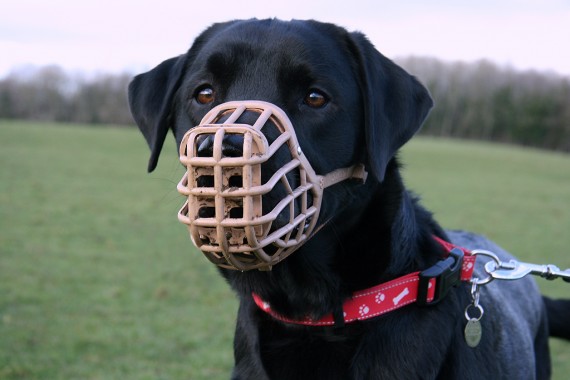How to handle dog aggression when walking on the lead
 Most dog owners have gone through the experience of taking their dog out for a pleasant walk on the lead and the dog being as good as gold until they encounter another person or dog, and then they go crazy. For many dog owners it can be incredibly embarrassing, especially if the other dog is completely calm and unresponsive to your dog, and if you meet the other dog and dog owner on a regular basis! It can leave you dreading encounters with other people or dogs when out for your walk. Why is your dog behaving aggressively on the lead? What can be done about it?
Most dog owners have gone through the experience of taking their dog out for a pleasant walk on the lead and the dog being as good as gold until they encounter another person or dog, and then they go crazy. For many dog owners it can be incredibly embarrassing, especially if the other dog is completely calm and unresponsive to your dog, and if you meet the other dog and dog owner on a regular basis! It can leave you dreading encounters with other people or dogs when out for your walk. Why is your dog behaving aggressively on the lead? What can be done about it?
There are two key reasons why dogs are aggressive when on a lead – frustration and fear. We all feel frustrated when we want something badly but can’t have it. If a dog is very playful with other dogs off the lead, but barks and jumps about excitedly on the lead, it could be that he desperately wants to go and play with or visit the other dog, but because he is held back, he becomes annoyed. A dog like this can be helped just by walking him out in the company of other dogs, which reduces the excitement he feels seeing a dog across the street.
As we explained in our article, An Introduction to Dog Behaviour Therapy, dogs are often aggressive because they are frightened. Fear can be all-consuming. Being on the lead reduces their options: they can’t run away, so fighting may be the next best choice. Some dogs are attacked or pestered by other dogs whilst they are on the lead, so the situation becomes scary. The dog on the lead may shy away initially, but a forceful or particularly playful dog many not heed this and keep after them. So the restrained dog has little choice but self-defence.
The way we handle the lead can also cause problems of frustration or fear. Pulling back on the lead, shortening or tightening it when another person is coming is a natural response for the dog owner but can cause a dog to behave badly. Just by doing this we make the dog think there is something scary coming. If the dog is excited at the prospect of meeting someone new, or an unknown dog, our tugging on the lead can turn this excitement into annoyance. Walking a dog on a relatively short lead in busy areas (so he can be quite loose, but not on the other side of the pavement) takes away the need to rein the dog in. If the dog is on a long lead and there are people approaching – use the ‘come here’ signal, ask the dog to sit, and make a fuss of him while you shorten the lead. This turns the dog’s perception of the situation into ‘training’ as opposed to ‘threat’. Using a head collar instead of a harness or normal neck collar can help. Once a dog is used to wearing a head collar they are often calmer on the lead.
For more information about dog behaviour issues, including aggression in other situations, indoor toilet trouble, being destructive and hyperactivity, click here to read our article. For information about booking dog behaviour therapy sessions, please visit https://www.witsend4pets.co.uk/behaviour.php